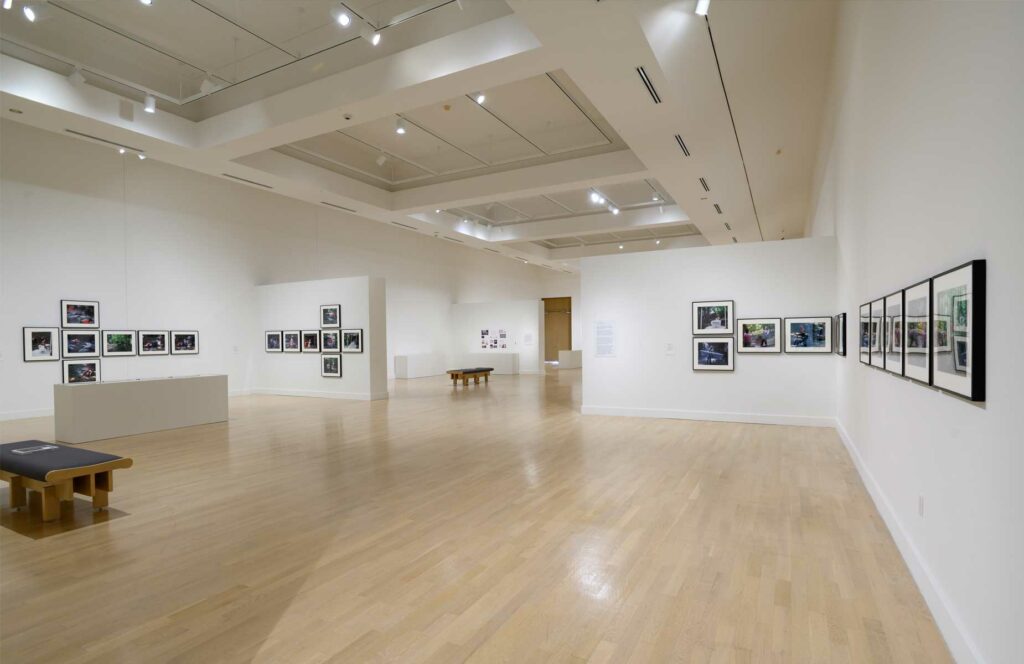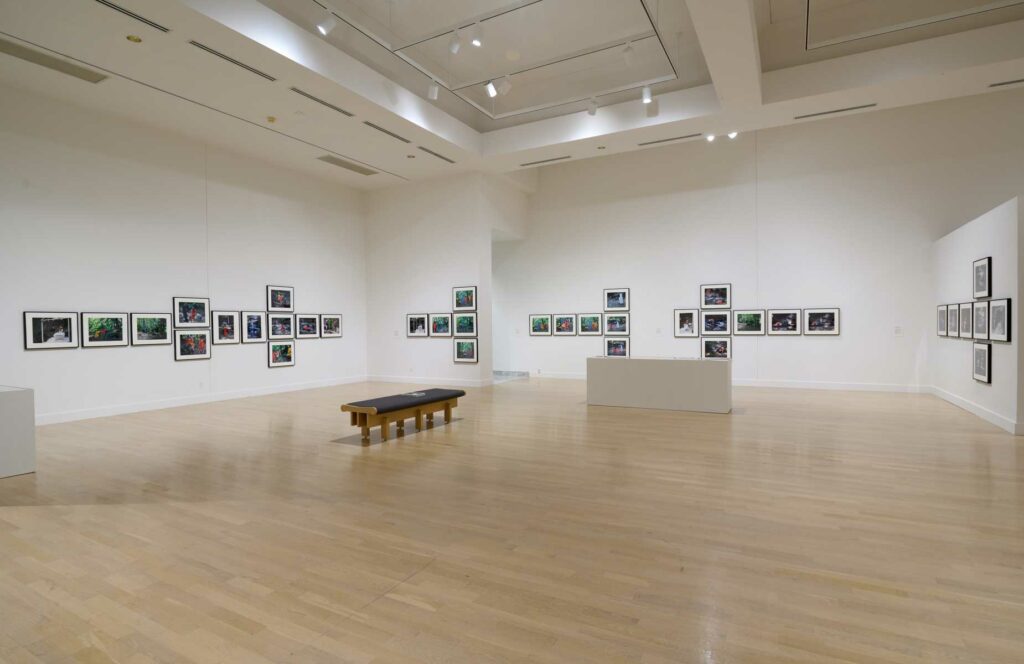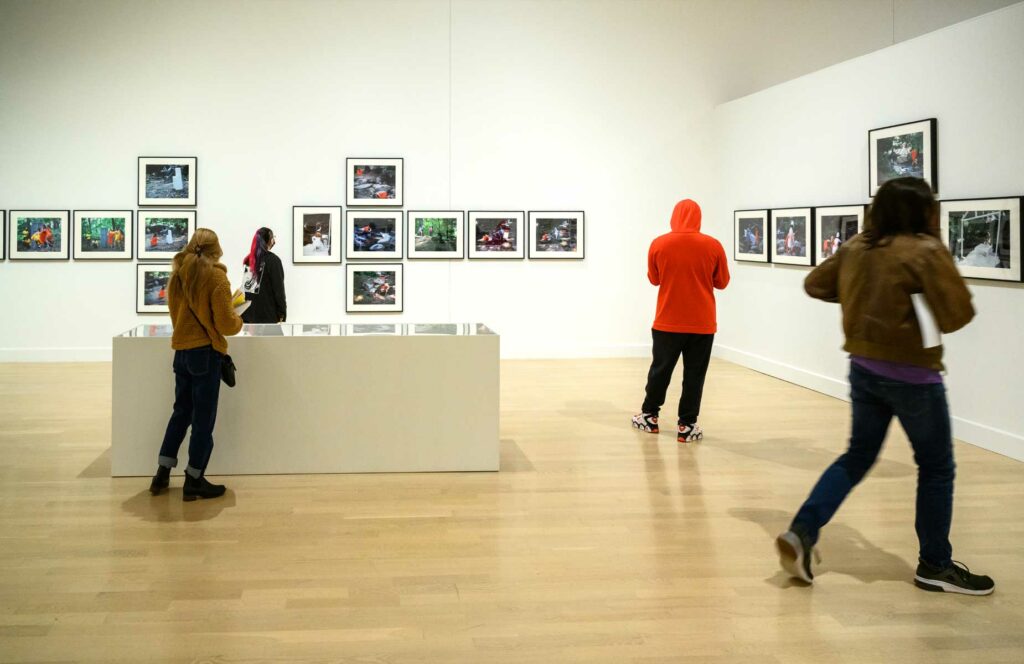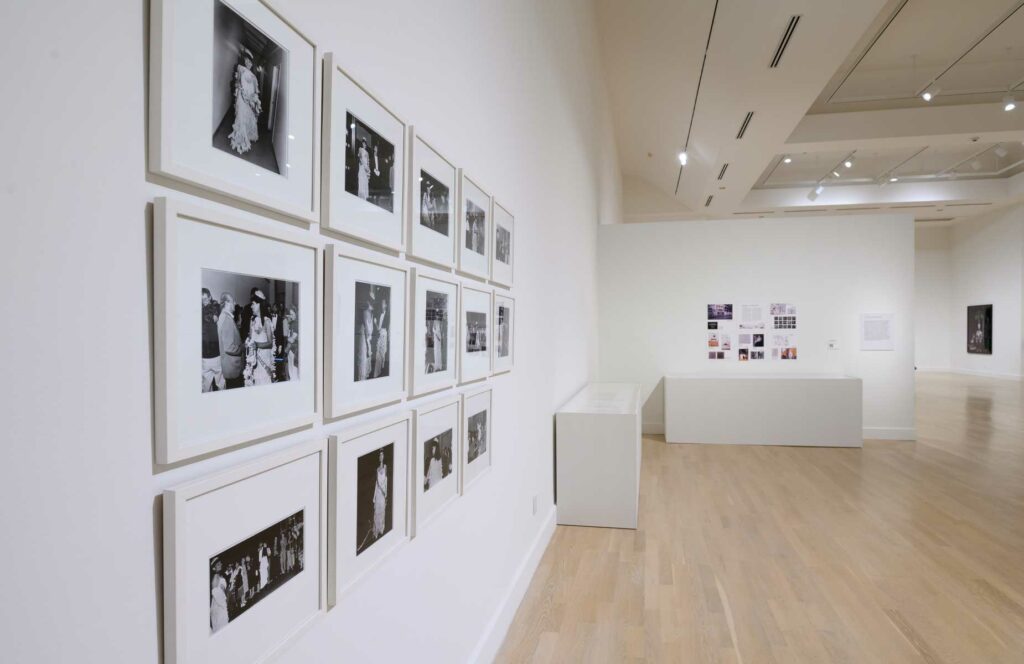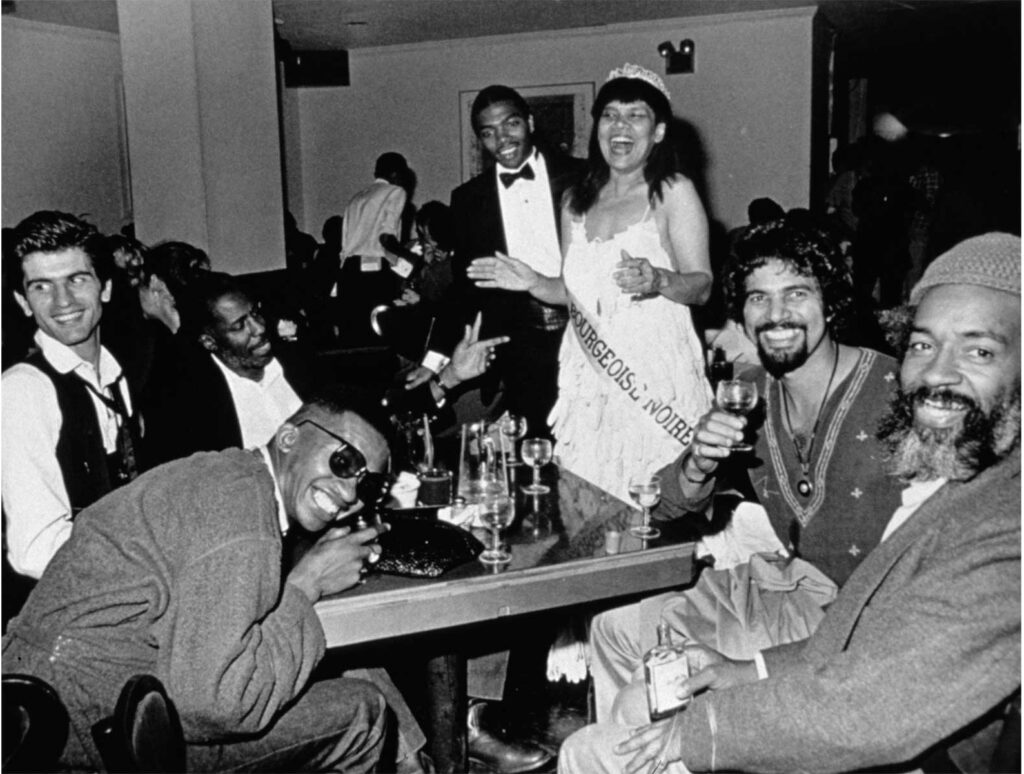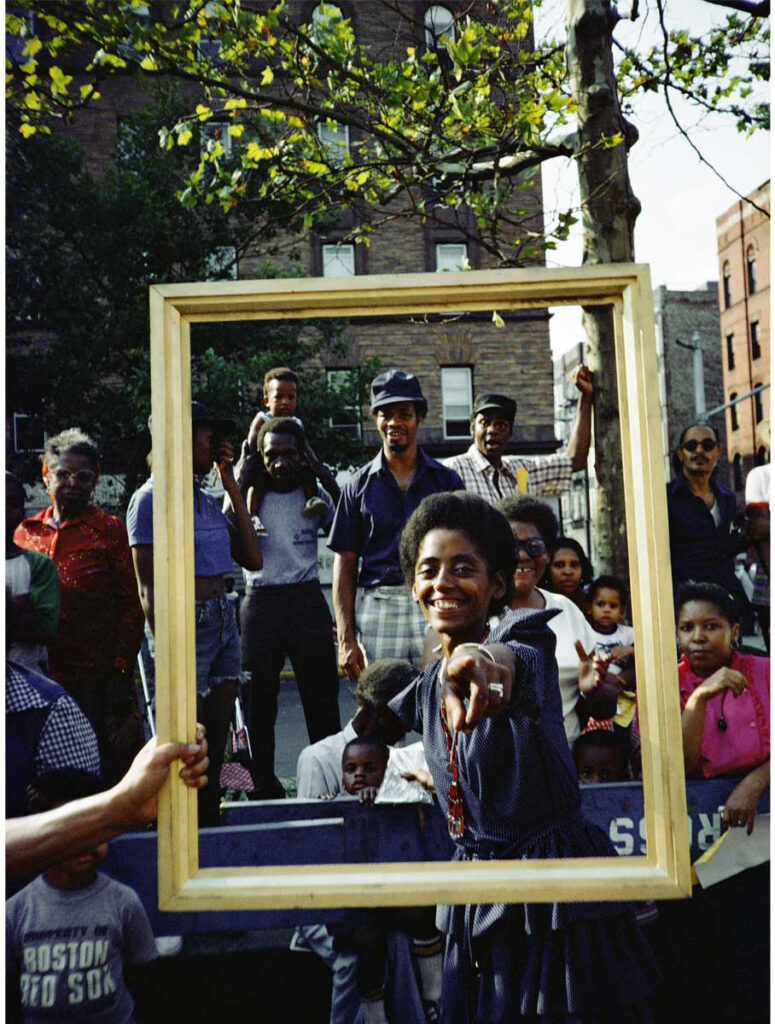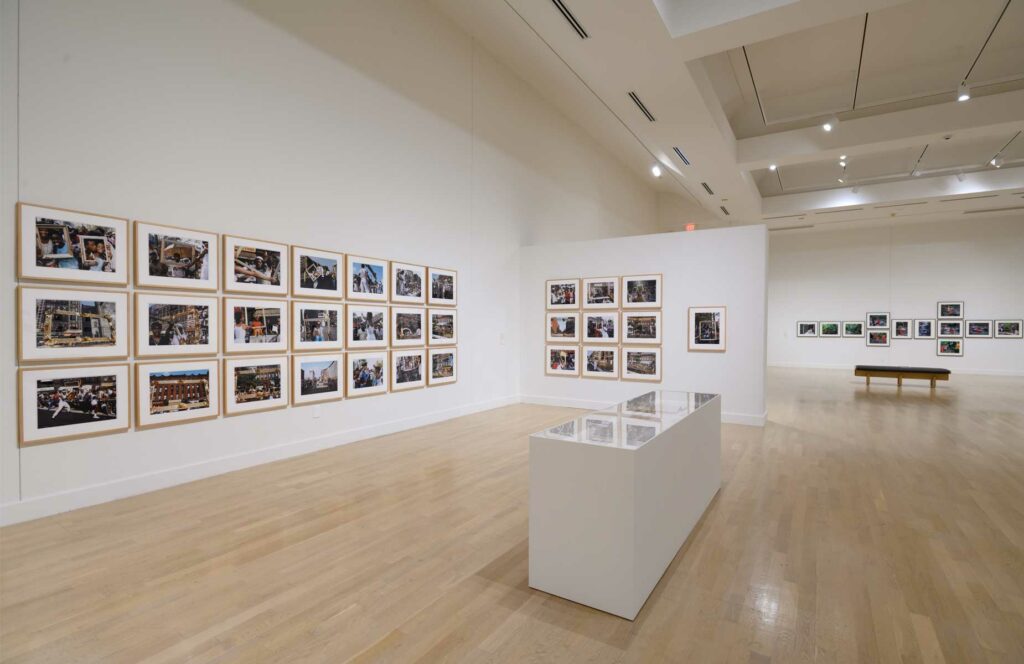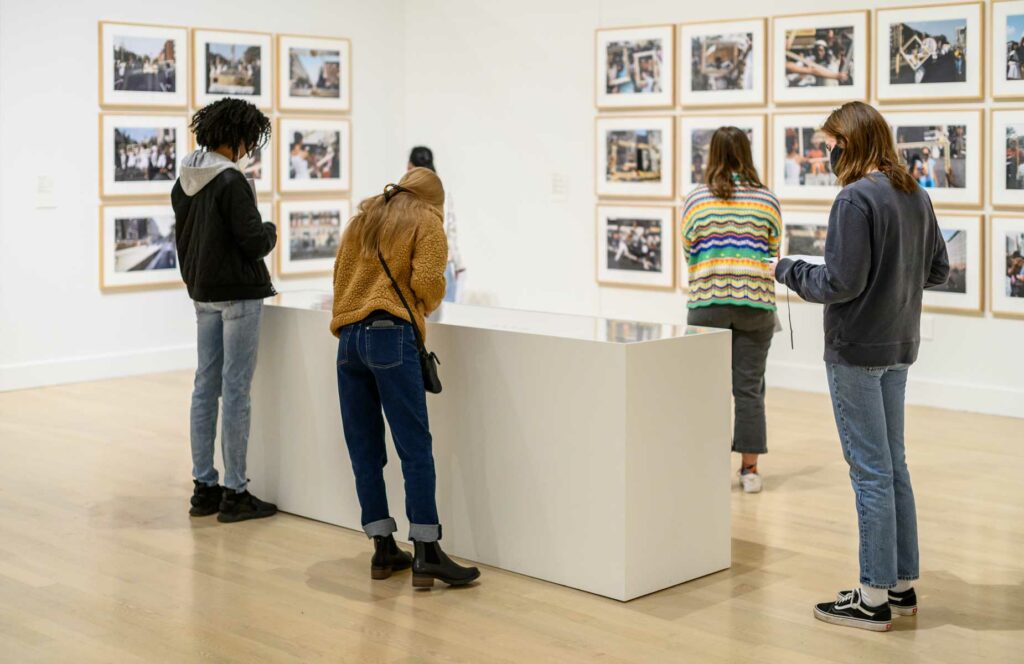Lorraine O’Grady: Both/And, on loan from the Brooklyn Museum in New York, is the first comprehensive overview of the work of Lorraine O’Grady (born in Boston, 1934), one of the most significant figures in contemporary performance, conceptual, and feminist art. O’Grady is widely known for her radical persona Mlle Bourgeoise Noire, and has a complex practice that also encompasses video, photomontage, concrete poetry, cultural criticism, and public art. The artist has consistently been ahead of her time, anticipating contemporary art world conversations about racism, sexism, institutional inequities, and cultural oversights by decades, and her prescience has inspired younger generations of artists.
Raised in Boston by middle-class Jamaican immigrant parents and educated at Wellesley College, O’Grady spent years working as an intelligence analyst for the US government, as a translator, and as a rock music critic before beginning her career as a visual artist in the late 1970s at the age of 45. Throughout her work, O’Grady has called attention to the deeply segregated nature of the art world while also continually imagining her own history, body, and relationships, within a cultural landscape that often makes it difficult for Black women to speak for themselves.
These parallel threads—of outward critique and inward reflection—are some of the many binaries that O’Grady’s work addresses. By putting seemingly contradictory ideas together, O’Grady questions the power attached to such oppositions as Black and White, museum and individual, self and other, West and non-West, and past and present. The exhibition’s subtitle Both/And, emphasizes the artist’s ambitious goal of dismantling either/or thinking in favor of broader possibilities.
Lorraine O’Grady: Both/And is organized by Catherine Morris, Sackler Senior Curator, Elizabeth A. Sackler Center for Feminist Art, Brooklyn Museum, and writer Aruna D’Souza with Jenée-Daria Strand, Curatorial Assistant, Elizabeth A. Sackler Center for Feminist Art, Brooklyn Museum. Leadership support for this exhibition is provided by the Henry Luce Foundation.
Its presentation at the Weatherspoon Art Museum is generously supported by Bank of America, Beatrice Schall, Sydney Gingrow, Carol Cole Levin, and Tim Warmath and Edward Comber.
NOTE: On Saturdays, beginning January 15 and continuing through April 30, WAM docents will be available at 1-1:30pm to introduce drop-in guests to the Lorraine O’Grady Both/And exhibition.
Full press release here.
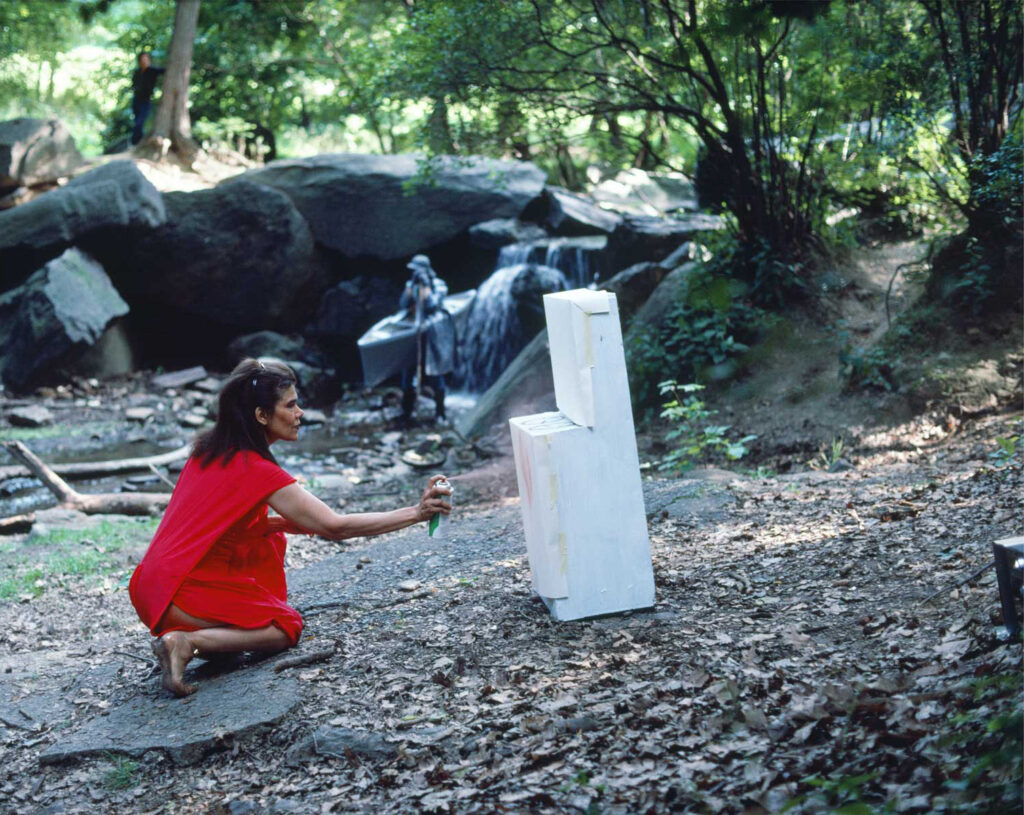
Lorraine O'Grady
United States, born 1934
Rivers, First Draft: The Woman in Red starts painting the stove her own color,
1982/2015
Digital chromogenic print from Kodachrome 35mm slide
16 x 20 in.
Courtesy of Alexander Gray Associates, New York
O’Grady’s first performance, Rivers, First Draft, or The Woman in Red, was presented in New York’s Central Park on August 18, 1982, in front of a small audience of friends and the occasional passerby. Interweaving three narratives, the performance is an animated and dreamlike exploration of O’Grady’s life, including her upbringing in Boston’s Caribbean diaspora, her emergent feminism, her creative coming-of-age, and her traumatic encounters with art world politics. Key to the performance is the metaphor of the Crossroads, as it is understood in African diasporic religions such as Haitian Vodun. The performance’s multiple storylines speak of the artist’s path from childhood to adulthood and artistic independence. The narrative follows the Woman in Red (O’Grady as an adult) as she navigates the New York art world of the 1970s, where her gender and her Blackness exclude her from both Black and White artists’ circles. Art Snobs, Black Male Artists, and the Debauchees act as choirs framing her fraught social encounters, which include a symbolic assault. The artist’s moment of self-actualization occurs when she spray paints a white stove red, signaling her feminist political transformation and her release from her mother’s oppressive cultural dictates. The story culminates as O’Grady’s childhood,
© Lorraine O’Grady/Artists Rights Society (ARS), New York

